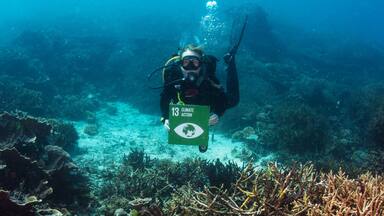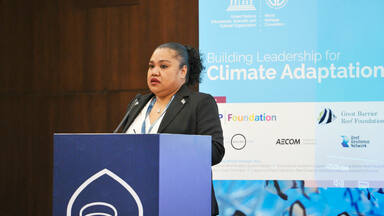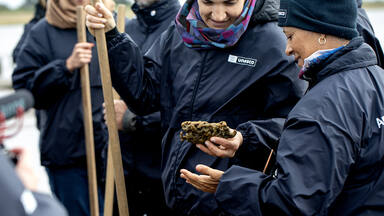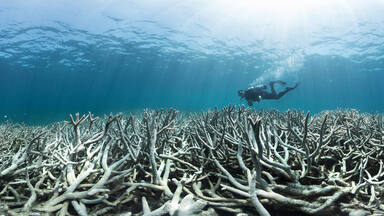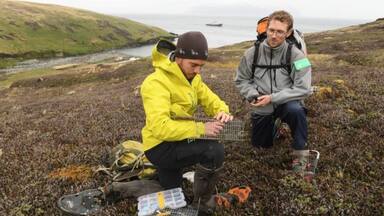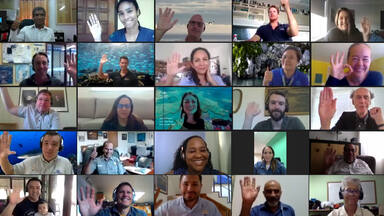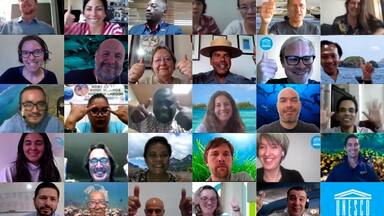Best practices in coral bleaching preparedness at UNESCO World Heritage marine sites
On 13 July 2022, experts in coral bleaching preparedness and local management teams from UNESCO World Heritage coral reefs met online to share best practices to recognize bleaching alerts and rapidly deploy monitoring and evaluation measures during such events.
Coral reefs have been increasingly exposed to heat stress in recent years due to rising temperatures that result from climate change. Under a business-as-usual emissions scenario, 25 out of the 29 World Heritage reefs are expected to severely bleach twice per decade by 2040. Understanding alert systems of upcoming mass bleaching events and coral bleaching preparedness has become an essential part of local management at World Heritage coral reefs everywhere.
In the Belize Barrier Reef Reserve System World Heritage site (Belize), marine managers rely on bleaching alert emails issued by the NOAA Coral Reef Watch, which predicts sea surface temperatures under which corals might bleach. This triggers in-situ coral reef monitoring campaigns to verify if corals have actually bleached and should be targeted for coral restoration.
Insights shared from the long-term coral reef monitoring programme in the Rock Islands Southern Lagoon World Heritage site (Palau) helped managers to understand the importance of good water quality, avoiding over extraction of fish that eat plant material which minimize the overgrowth of algae, and conserving the areas from where coral larvae can repopulate damaged reefs.
Managers at Australia’s Great Barrier Reef World Heritage site use meteorological analysis, aerial surveys, and in-water surveys to prepare for, and document, bleaching events. An innovative programme called Eye on the Reef allows visitors to register observations when diving on the reef and provides the World Heritage management authority with valuable first-hand information when a bleaching occurs.
Experts further shared the critical importance of both clear communication and for building resilience by reducing other pressures such as unsustainable fisheries or by ensuring good water quality. Building resilience is considered an essential part of preparing for a coral bleaching event. This starts years in advance but allows coral reefs a much better chance of recovery when a bleaching event occurs.
On the occasion of the “Our Ocean” Conference in Palau, UNESCO announced an emergency plan to give World Heritage coral reefs the best chance of survival.
The online meeting was the sixth edition in a new digital exchange series that was launched by UNESCO’s World Heritage Marine Programme in April 2020. The online meetings provide an exclusive online platform where managers from the 50 marine World Heritage sites connect and share successes in tackling key conservation challenges.
Due to their status as the world’s flagship protected areas, UNESCO marine World Heritage sites are uniquely positioned to drive change and innovation, set new global standards in conservation excellence, and serve as beacons of hope in a changing ocean. The online meetings are made possible thanks to the support of the French Biodiversity Agency and the Great Barrier Reef Foundation. Participation is upon invitation only.

